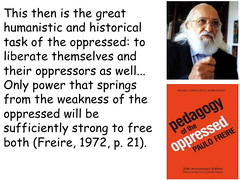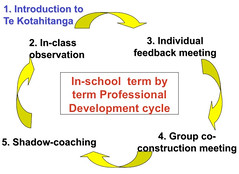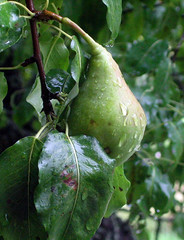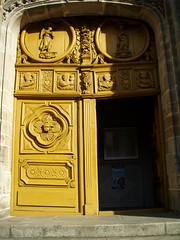Wednesday, August 31, 2011
Fostering an online professional community: What can you do?
Fostering an online professional community: What can you do?
Tuesday, August 23, 2011
Webquests and ePortfolios - both free :-)
Monday, August 22, 2011
Relationships, literacy and team spirit: Janey Nolan talks about her work with Te Kura (guest blogger August 2011)
Hi to everyone on this freezing week in August with snow everywhere – even a flurry in Auckland! Thank you Hazel, for inviting me to blog.
I am currently working at Te Aho o Te Kura Pounamu – The Correspondence School as the Te Ara Hou Team Leader for the Northern Region for years 7 to 10.
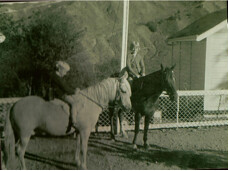 Janey and her brother Andy riding to school 1967 | 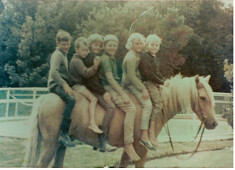 Janey on her first pony, Sugar with friends |
After leaving school I completed my B. Ed. at Massey University managing to complete a paper in equestrienne and a special paper in “teaching disabled children to ride” before travelling overseas. My passion has always been sport, teaching and building relationships with both people and animals.
After being married and having three children I taught in Feilding, Taupo and various schools in the Waikato plus 18 years at Hamilton Girls’ High school while gaining my MSocSci and later a Diploma in School Principalship at the University of Waikato. As part of the senior management team I became very interested in online learning and teaching. I worked with Dr Paul Keown and Professor Lex Chalmers setting up on line communities especially for rural teachers in country schools.
In 2010 I was fortunate to be awarded a Mathematics, Science and Technology Fellowship with the Royal Society at the University of Waikato where I investigated the effectiveness of a blended Community of Practice for teachers of Geography in isolated schools. The key to this community was relationship building. There are presently 102 teachers on this Isolated to Connected Community of Practice site. The September blogger, Dr Paul Keown will talk about this site next month on this superb site of Hazel’s.
Hazel Owen and Eddie Reisch were extremely helpful to me in 2010 with helping me with links to other online communities. Hazel in particular was always there to help me with “Ning” related problems.
In 2011 I took on a new challenge as I hoped to be able to help rural and isolated children. I am thoroughly enjoying my new position at Te Aho o Te Kura Pounamu – The Correspondence School as a Team leader for the Northern region. I am part of the He Kakano programme where my first goal is to encourage my team to build strong relationships especially with our Maori students and whanau. My second goal is to enable our students and their whanau to become more literate. Recently I spoke at the Literacy Aotearoa Conference with Robert Blucher (Northern regional manager) where we managed to gain much interest from Literacy Aotearoa which we are finding really exciting.
Background about Te Aho o Te Kura Pounamu:
What astounded me when I first started at Te Kura was the fact that the school was so large with approximately 25,000 students making it the largest in New Zealand in addition those geographically isolated make up a rather a small percentage of the roll. It is interesting to note that most students are enrolled due to exclusion, expulsion, alienation, psychological and psycho-social reasons (58%). All types of isolation including geographic isolation make up only 13% of our roll (see Table 2). I was surprised that dual students comprise 43% of the roll and adults make up 31% (see Table 3).Table 1 below showing enrolment for Te Kura increasing 2007 to 2010 as well as photographs of our students at various Northland locations
Cumulative enrolments | 2007 | 2008 | 2009 | 2010 |
| Total | 22,923 | 22,802 | 24,503 | 26,135 |
| Equivalent full-time students | 7,138 | 7,845 | 7,845 | 8,167 |
 |  |  |  |
Table 3
Goal one: Relationships
Max and his mother have given me permission to tell our story about “Relationships”.I was speaking to Max’s Mum and I said, “Can I please speak to Max?”
“No, I’m afraid he won’t speak to you or meet with you as he doesn’t trust or like teachers”
After some time I got quite angry – so much for being crazy about building relationships I thought to myself. Think being calm, don’t get irate were my thoughts.
Eventually I said, “Well would he like to meet my dog instead of me then?”
“Yes”, Mum said.
The following weekend Lucy our dog and I met Max at the dog park. We taught him how to lead her and Max fed her 'schmackos' for treats when she came to him. Max didn’t say much except for asking when he could meet Lucy next. As the weeks progressed Max wrote about Lucy, asked about her and did lots of work for me and Lucy. Max was trying very hard but his writing was very poor.
As the weeks progressed our outings with Lucy increased and his writing improved immensely. On the first weekend of last holidays I met Max and his Mum and I said they would be thrilled with Max’s report as every teacher has given him an excellent report with grades of excellence in all his subjects. Mum burst into tears and hugged Max and said, “This will be the first good report he has had. Even when he was five he had a bad report”.
Last time Lucy and I met Max he had a brand new puppy of his own, a smile as wide as can be and the confidence of a successful person.
Another student would not meet me however after some time she agreed that I could meet her at her house at 6pm on a Friday, not the 5pm Monday as I had suggested. Once I arrived at her house with homemade chocolate chippies she invited me in and offered a cup of tea. The following week she text me and said she would meet me at the library on a Monday at 5pm. Her sister who is eighteen came along as well. She asked if she could join Te Kura as an adult student and is now enrolled. The exciting part is Aunty who is their caregiver has agreed to be part of the pilot with Literacy Aotearoa. Aunty will have a tutor to help her teach Joanna and then Literacy Aotearoa will help Aunty to become more literate and numerate. It is such a fabulous idea as this is a win - win situation where everyone is gaining greater literacy skills.
Goal Two: To encourage students and their whanau to improve their literacy skills.
Presently my Northland team is involved with a joint venture with Literacy Aoteroa where Literacy Aotearoa Tutors will be working with or students’ supervisors to help with literacy and numeracy skills. The supervisors will first be able to help teach their students with for example, division skills. As time goes by and supervisors grow in confidence it is hoped that the supervisors may also become involved with not only helping their own students but furthering their own literacy and or numeracy skills. It could be that supervisors then enroll in further education and if this happens students will have valuable role models.The trial is with 30 to 40 supervisors in the Northern region of New Zealand with Te Ara Hou teachers of years 7 to 9 taking part in this pilot.
Why do we need this pilot?
- If supervisors cannot understand the instructions in the booklets they cannot provide the key support our students need to succeed.
- When neither supervisor nor student can properly understand the tasks it can lead to frustration, a sense of failure and disengagement.
- If supervisors are given support to increase their level of literacy by Te Kura and Literacy Aotearoa, our students will be able to progress further.
- Literacy Aotearoa gain adult students
- Literacy levels of adults improve
- Student engagement and achievement improves
- Supervisors may become adult students of Te Kura
- Project throughout NZ by 2012
There is a considerable body of research that shows the relationship between parental education and qualification levels and the educational achievement of their children, and that low literacy is frequently intergenerational because parents and whanau with low literacy are less confident and able to support their tamariki. Supporting parental literacy and numeracy for example, the “whanau-school partnerships” that are part of the Ministry of Education’s Ka Hikitia education strategy and which aim to improve the engagement and achievement of Maori students as they transition from primary into secondary school is working well with students of a similar age as those we are conducting our pilot research (Years7 to 10).
A pilot will take place in the Northern region in terms 3 and 4 (with mainly parents of TAH students). Literacy Aotearoa has secured funding for ACE Innovation Pool to fund the pilot and it is hoped this approach will become nationwide in 2012.
The project will be launched by Mike Hollings and Bronwyn Yates, who is Tumuaki of Literacy Aotearoa 19th August.
We have spent time talking with Peter, Bronwyn and Brenda at Literacy Aotearoa Auckland about what supervisors gaining confidence may look like? How can we measure this?
It will be interesting to report back to you with the results of our pilot scheme which begins on August 22nd 2011. The first evaluations will be conducted at the beginning of December this year.
Summary
Relationships have been strengthened this year by conducting many more face to face meetings, event days in places such as Kaikohe, Whangarei, Albany, and Mangere (see Kaikohe Event day photograph below) and the enormously good spirit of the team I work with. It is a real please to work alongside teachers who visit their students in hospital, who visit students in gang houses who make birthday cakes and cards for their students, collect books for their students from closing down sales as well as stay up all night baking to take an impressive morning tea for whanau who have come a long way to event days.Friday, August 19, 2011
Listening and Respecting: A Culturally Responsive Pedagogy of Relations
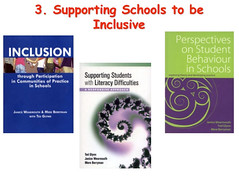 I have just been participating in a thought provoking webinar entitled Te Kotahitanga PD including Culturally Responsive Pedagogy of Relations, and facilitated by Mere Berryman. It was Mere's first time facilitating in a Webinar environment, and she faced all the technical hiccups with aplomb...and gave the participants a lot to think about.
I have just been participating in a thought provoking webinar entitled Te Kotahitanga PD including Culturally Responsive Pedagogy of Relations, and facilitated by Mere Berryman. It was Mere's first time facilitating in a Webinar environment, and she faced all the technical hiccups with aplomb...and gave the participants a lot to think about.- Providing interesting materials that promote engagement by the learner
- Delaying and reducing direct teacher instructions and direction so as to allow opportunities for learners to initiate
- Maximising opportunities for shares activities between less-skilled and more-skilled learners so there can be reciprocal learning
- Interaction that emerge from relationships (Sidorkin, 2002), in particular those of trust and respect
- Culture counts (Bishop & Glynn, 1999)
- Power is shared between self-determining individuals within non dominating relations of interdependence (Iris Marion Young, 2004) to help develop more independent skills. The notion of interdependence is much more important in Maori view of the world.
- Pedagogy is responsive and interactive
- Learners / teachers are connected through a common purpose / vision and reciprocal responsibility
 The most important things for designing programmes to help Maori - the programme would have aspects of all of these factors. One of the key words is enjoying - it's about identity, Te Reo, culture, ako and productive partnerships. It is not just about educational success. So, what are the indicators of success in these areas?
The most important things for designing programmes to help Maori - the programme would have aspects of all of these factors. One of the key words is enjoying - it's about identity, Te Reo, culture, ako and productive partnerships. It is not just about educational success. So, what are the indicators of success in these areas?Some of the indicators are, feeling confident to identify as Maori, are attending school more often / regularly, are staying at school longer and engaging with learning. Others are that they are achieving at higher levels across a range of achievement data, and leaving with qualifications and career pathways. There is also a strong focus on Maori focussing on school activities., and there is more whanau involvement in the school, as well as more self-determined and less directed by the school. I tentatively ask...the involvement of whanau in the school, and in an active role, not a token role of sports and fêtes - is this something that all schools should be aiming for across all parents / whanau? Is there a received notion by many of the communities that the school is the 'expert'? How can this be re-balanced? So the relationship becomes more of a partnership where everyone's experience and expertise is celebrated and meaningful - although Mere cautioned that Maori experience of partnerships is that they tended to uneven. One of the participants suggested this resource - the Te Kauhua materials: http://tetereauraki.tki.org.nz/Te-Kauhua.
 Mere recommended some resources for supporting schools to help inclusion, including some books. She also talked about the power of Communities of Practice and Wenger's notion of brokerage whereby CoPs become "important paces of negotiation, learning, meaning and identity "( Wenger, 1998, p, 133) . Over time, Mere asserted, communities develop a unique perspective on their topic as well as a body of common knowledge, practices, and approaches...They may even develop a common sense of identity.
Mere recommended some resources for supporting schools to help inclusion, including some books. She also talked about the power of Communities of Practice and Wenger's notion of brokerage whereby CoPs become "important paces of negotiation, learning, meaning and identity "( Wenger, 1998, p, 133) . Over time, Mere asserted, communities develop a unique perspective on their topic as well as a body of common knowledge, practices, and approaches...They may even develop a common sense of identity.Intervening with leadership in school systems and structures to help consideration of the relationship between what teachers are doing and what school leadership is doing - and what the interface looks like. The goal is focusing on improving target students' participation and achievement. Leadership in these interventions needs to be responsive and proactive rather than reactive.
Mere closed with the idea that effective leadership engages with influencing change then sustaining and managing reform that supports the shared vision...until it is "business as usual".
Monday, August 15, 2011
Do you need a social media detox?
Click HERE to access the full size article.
Know where you are going? eLearning roadmap
Tuesday, August 9, 2011
What does culturally responsive facilitation look like? A reflection
 I have been delaying writing up this reflection for a long time...more than a couple of months in fact - the notes I took during the session have sat in draft format and I have 'mulled' over what happened and why.
I have been delaying writing up this reflection for a long time...more than a couple of months in fact - the notes I took during the session have sat in draft format and I have 'mulled' over what happened and why.Part of the reason, I guess is that it is connected to those gnarly subjects 'cultural appropriacy and responsiveness', which can lead to some strong, occasionally critical, reactions. The elephant in the room is often the feeling of not knowing how to react appropriately, and a fear that the people with whom you are interacting would not be sympathetic to your not knowing.
What happened?
The session I was participating in was a professional development session about facilitation. We discussed the idea that facilitation can take many forms, and whether it is 'good' or not is in part dependent on context and interpretation - and all of these are factors are likely to change over time as beliefs around learning and teaching shift.
All great so far...then my brain went into overdrive - for me, given the points above some of the interesting conundrums included:
- If a person does not share your values around how facilitation is conducted, what are the implications around that?
- Can a person elect to not engage with the way a learning experience is set up? What is the result of this?
- Can you go in with humility if you have a set of values up front - should they be negotiated as part of the process?
- Can we assume that every school, institution, iwi or whanau accepts that the values you go in with are the most valuable ones for them?
- What do we have to learn about the people that we are going to be working with?
- A suggestion was that it is necessary to bring something to a session that is 'part' of the people - analogies, images, ways of talking about things. But, how do you do that in a diverse community. What if the analogies are meaningless to some of the people in the room? Do you focus on the majority? Do you try to cover most of the cultural groups? Do you cover all of them? How? Or, is the main focus the people in the room with the most influence? People who are from that part of the world?
Image by Lazar_Shlevich
And finally, the 'pear-shaped' moment...I started to have a visceral reaction to being advised that I would need to share a specific set of values, and it felt as if there was little or no room for discussion around what was included and how it was interpreted. Furthermore, with my rapidly increasing sense of distress, there appeared to be one main culture that was being put-forward...and much of the language being used to describe some of the values was totally foreign to me - literally. I hadn't a clue what was going on half the time. During the session I typed "I am being made to feel like an outsider...somehow lacking in cultural knowledge and awareness. And maybe that is an uncomfortable truth. It is an area that I am unfamiliar with. Is it because my own beliefs are being challenged? I find the language being used as exclusive / excluding of me and my culture".Image by hazelowendmc
So what?I think of myself as a person who has travelled a reasonable amount through Europe, South East Asia, and Australasia, and I have spent several years in the Middle East. It came as quite a shock, therefore, when I realised that I was having an emotional reaction around cultural responsiveness in this session - something I had experienced before, but never so strongly. It was always something that I read about in articles and research papers, and saw as an integral aspect of learning design.
Another thing I noticed, though, is as soon as I started feeling uncomfortable - I stopped really listening and engaging with the other people in the session. The only reason I remember anything except the emotional response was that I could access the notes I took at the outset of the session.
I have since spoken to other people who have experienced similar reactions...but interestingly people would have a "wow, I'm so pleased you mentioned that. No-one has before and I just thought I was being precious" type reaction. Often the reaction is dismissed as an over-reaction.
Bigger question for me, therefore, is how many times have I made students and colleagues feel similarly uncomfortable? Only one time has a student spoken about this to me (and after the sense of mortification on my part dissipated a little, I was able to consult with another student to help me work out what I had done to offend, how to address that situation, and how to make sure I didn't do it again...phew!).
What next?
 There are several things I need to do and think about including:
There are several things I need to do and think about including:- grasp every opportunity to learn about other cultures in a meaningful (rather than token) sense;
- work with individuals who I know I can ask dumb, and perhaps what turn out to be insensitive, questions - where that they will understand I am learning...and making mistakes;
- find the courage to speak to people in a non-confrontational way when they make me feel culturally 'other'...but to go with suggestions around how this might be addressed so as to not leave them feeling high and dry; and
- work on, read about, and research how to design culturally responsive and appropriate online spaces and experiences - such that they are neither 'sterile', nor inclusive of only one or a few cultures. Rather I would like to design great spaces to learn and communicate for as many cultures as possible.
Related articles
- "Culturally Responsive" (education420.wordpress.com)
Thursday, August 4, 2011
Zeenah – Learning in a social world: A social learning scenario
This is a hypothetical scenario of a student's learning journey and it demonstrates: 1) how a learner might be inducted into a blended learning programme; 2) how she would progress through the programme; 3) the scaffolding and developmental nature built into the design of the programme; and 4) how she would interact with peers and teachers, virtually and face-to-face. This scenario is designed to be read in conjunction with a complementary mindmap.
Zeenah – Learning in a social world: A Web 2.0 scenario
Related articles
- E-Learning Provision and Participation: Trends, Patterns and Highlights (ictelt.blogspot.com)
- Updating my Web 2.0 lists (philbradley.typepad.com)
- Help Students Develop Lifelong Learning Skills with Web 2.0 Tools (hollymccracken.wordpress.com)
Tuesday, August 2, 2011
The conversation prism: Visual way of representing the networking realm
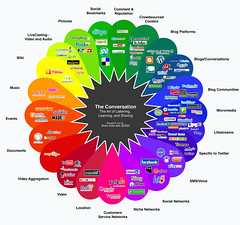
Sometimes, once you have worked through your design stages (and this could be for a whole programme or for an activity), you may then be left wondering what tool would be suit your needs, given the approaches and interactions you have planned for. You might, for example, have decided that you are going to use a problem-based focus and one of the things you would like your learners to do is access experts from all around the world. To do this you might encourage your students to access niche networks.
However - how do you work out the connections, and find out what is available? Bring on the following two diagrams: Pedagogical underpinnings to ICTELT design and The Conversation Prism. The first looks at some possible pedagogical approaches, and ties them with activities. The second outlines broad communications and interactions, and then suggests a few of the tools that could be accessed and used by your students. I've found it really useful...and it would be good to know if you have any examples or suggestions how you have used these tools :-)
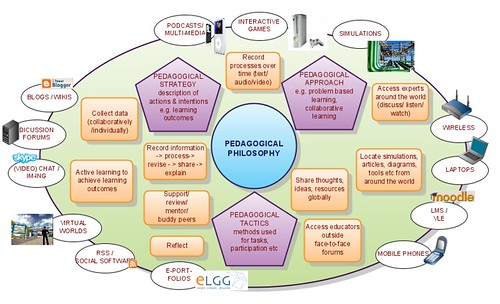
To access this image full size please click HERE (by hazelowendmc)
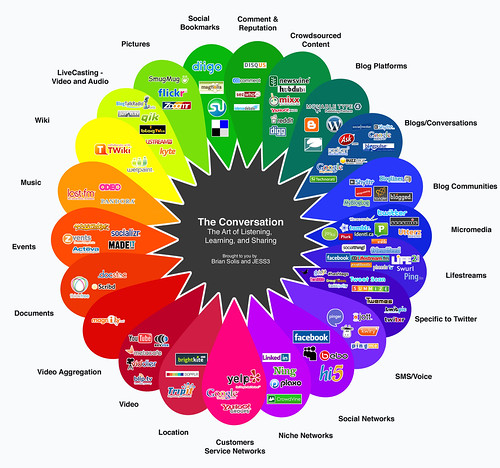
To access this image full size please click HERE (by b_d_solis)






